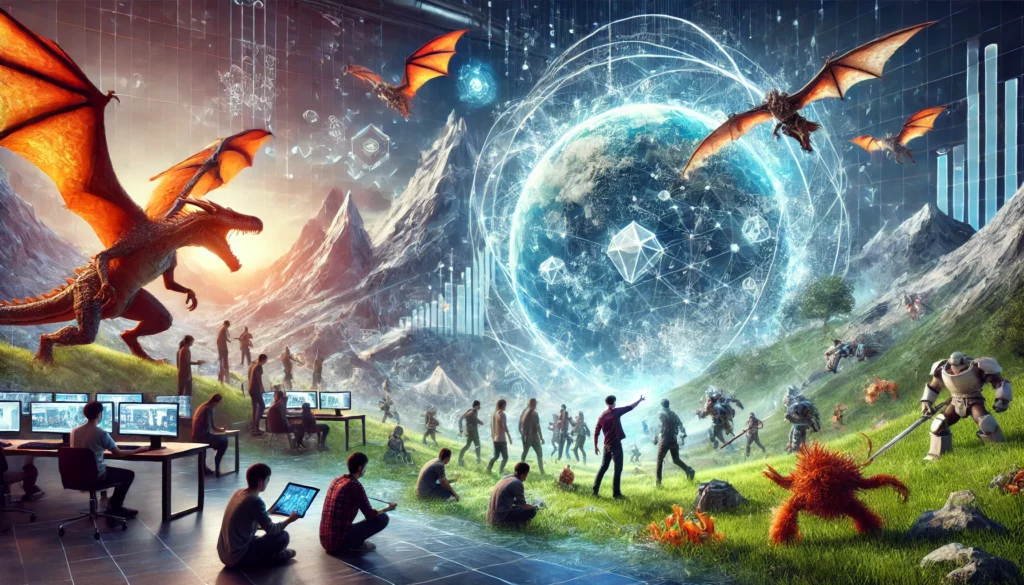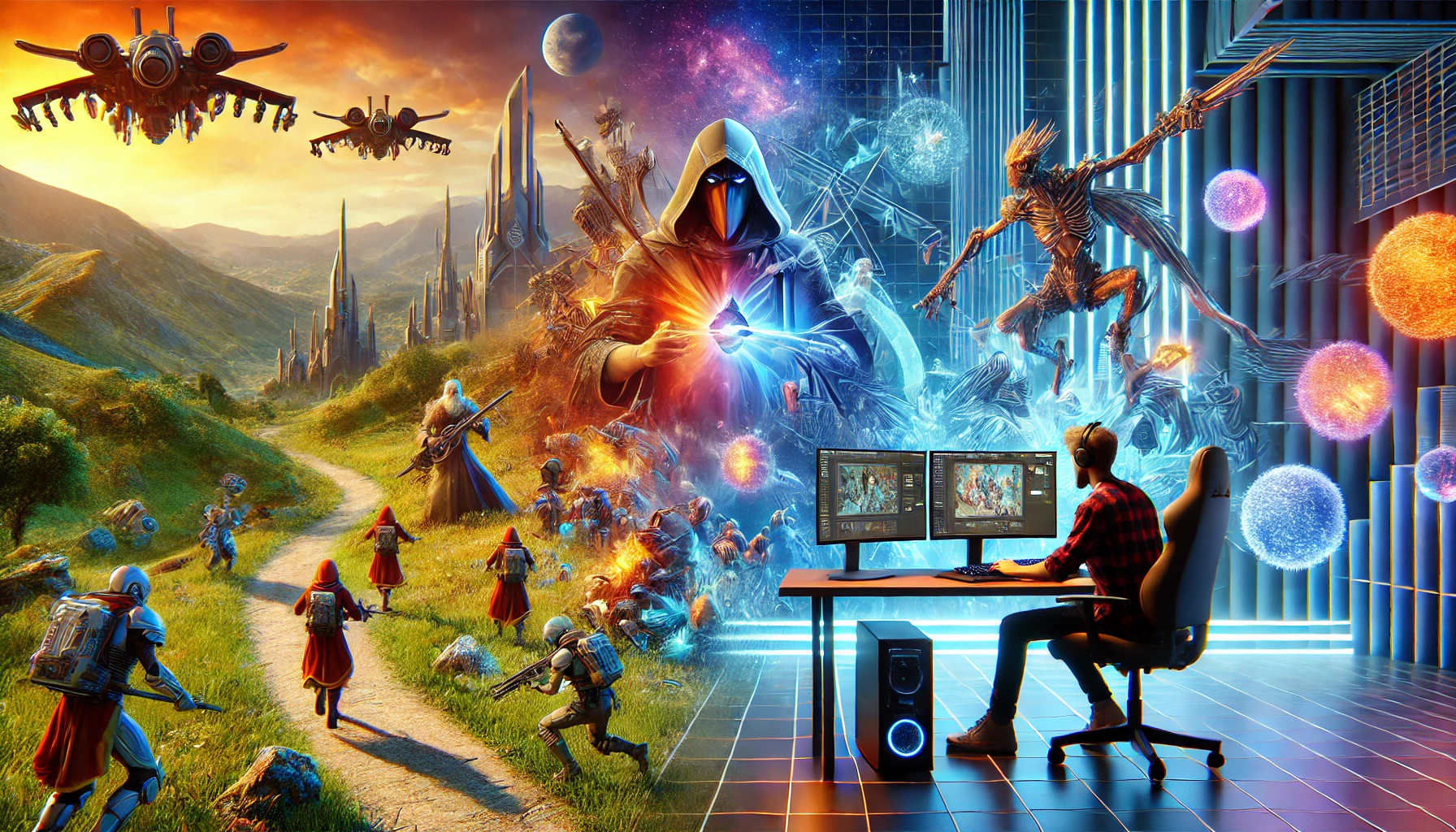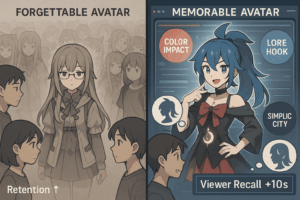The world of video games has come a long way from the early days of pixelated graphics and simple 2D environments. One of the primary driving forces behind this transformation is 3D modelling, an essential component of modern game creation. The gaming industry today relies heavily on 3D modelling in games to deliver visually stunning and immersive experiences that captivate players. In this blog, we will explore the importance of 3D modelling in games, the role of game engines, how virtual reality games are shaping the future, and how all these elements come together to create a seamless and immersive gaming experience.
What Is 3D Modelling in Games?
3D modelling in games refers to the process of creating three-dimensional digital representations of objects, characters, and environments used within a video game. By using specialized modeling software and sculpting specific software tools, game developers can create game-ready models that bring the virtual world to life. This technology is essential for making everything from game assets to complex game environments.
3D models are crafted with attention to detail, ensuring they look realistic and fit seamlessly into the game’s design style. These models are often textured, rigged, and animated to enhance gameplay and player immersion. From props like weapons and furniture to entire cities or fantasy worlds, 3D modelling is the backbone of modern game visuals.
The Role of 3D Modelling in Games: Bringing the Game World to Life
3D modelling in games 3d modeling involves creating digital representations of objects, characters, and environments that populate the virtual world of a game. It is the foundation of modern game development, where everything from game assets to intricate game props is crafted using modeling software. The game development process involves careful planning, conceptualization, and modeling techniques that ensure each element in the game serves a purpose while contributing to the overall gaming experience.
To ensure the accuracy and precision of 3D models, game developers determine the precise locations of points within a 3D space using vertical and horizontal point data relative to a visual reference.
Whether it’s creating detailed models for characters, designing game environments, or crafting game-ready models for props and backgrounds, game developers use various techniques, such modeling techniques such as procedural modeling and digital sculpting, to create intricate and realistic assets. Character modeling is one of the most time-consuming and complex tasks in the game creation process, requiring technical skill to ensure that characters fit into the game’s requirements and maintain a consistent visual style.
The modelling process often involves creating high poly models for visual fidelity and then simplifying them into low poly models that can be used in the game engine without compromising performance. This balance between visual quality and performance optimisation is essential for creating games that run smoothly across different gaming platforms, from PCs to consoles and mobile devices.
Understanding the Role of Game Engines
A game engine is the software framework used to develop and run video games. It handles everything from physics and rendering to audio and artificial intelligence. Popular engines such as Unreal Engine and Unity offer developers the ability to integrate complex 3D models with game mechanics. Game engines are essential for optimizing game performance and rendering models at high visual fidelity.
The Importance of Game Engines: Powering the Game World
At the heart of every video game lies a game engine—a powerful tool that enables game developers to bring their visions to life. A game engine is a software platform used to design, develop, and deploy games. It provides the necessary tools and functionalities for integrating 3D models, animations, textures, and interactive elements modeling for games, making it an essential part of the game development process.
Popular game engines like Unreal Engine and Unity have revolutionized the way games are created by providing developers with access to advanced features such as physics simulations, AI capabilities, and multiplayer functionalities. These game engines allow for seamless integration of 3D models, enabling game designers to focus on creative aspects of game design without worrying about the underlying technical complexities.
One of many games the primary challenges in using game engines is ensuring that game assets are optimised for performance without sacrificing the visual appeal of the game. This requires developers to carefully consider the polygon count of models, the resolution of textures, and the efficiency of animations. Optimizing performance while maintaining visual fidelity is a delicate balance that requires expertise in both technical aspects and artistic design.
Virtual Reality Games: A New Dimension in Gaming
The advent of virtual reality (VR) has introduced an entirely new dimension to the gaming world. Virtual reality games provide players with an immersive experience by placing them directly into the game world. Unlike traditional games, where players interact with the game via a screen and controller, VR games offer a first-person perspective that makes the gaming experience feel more real and engaging.
3D modelling in VR games takes on a unique challenge. Since the player is fully immersed in the game world, the level of detail required for models and environments is significantly higher. Every object, character, and texture must be designed with the player’s perspective in mind. Character models must be designed to look realistic from all angles, and game environments must be expansive and immersive to create a truly engaging experience.
The success of virtual reality games depends heavily on the combination of high-quality 3D models, immersive gaming experiences, and advanced technology. Furthermore, developers must ensure that the hardware capabilities of VR headsets are not overtaxed. At the same time, they must deliver visually stunning worlds that capture the imagination of players. Immersive gaming experiences, on the other hand, rely on high poly modeling and game environments that feel alive. Additionally, fine details in the design of characters, backgrounds, and game assets are essential for creating a truly immersive experience.
5 Key Aspects of 3D Modelling in Games
3D modelling in games involves creating lifelike objects, characters, and environments that enhance gameplay and storytelling. Key aspects include design accuracy, texture detailing, animation readiness, performance optimization, and seamless integration into game engines.
Character Modelling:
One of the most intricate tasks, character modeling involves designing digital characters for use in the game. These models must be accurate and flexible, with enough detail to support animation techniques and motion capture.
Game Environment Design:
Creating the world where the game takes place involves 3D modelling of landscapes, buildings, and other environmental elements. Using vertical and horizontal point data ensures the accuracy and precision of these game environments. These models must be designed to fit the game’s tone and aesthetic while providing a detailed, interactive environment.
Prop and Asset Creation:
Game assets are all the objects players interact with in the game, from weapons to treasure chests. Detailed models of these objects are crucial for a realistic gaming experience.
Optimization for Performance:
Balancing the complexity of models with game performance is essential. Game developers must ensure that game-ready models are not too complex, with a high polygon count, as this can hinder game performance, especially across different gaming platforms.
UV Mapping and Texturing:
UV mapping is the process of unwrapping a 3D model to apply textures. Proper texturing gives the models their final appearance, making them look realistic or stylized according to the game’s aesthetic.
Creating Immersive Experiences Through Detailed 3D Models
At the core of immersive gaming experiences are the detailed models and game assets that populate the game world. From first-person shooter games to military simulations, the level of detail in a game can make all the difference in how it feels to play. In fact, the more realistic and immersive the details, the more engaging the experience. Game developers use concept art and visual references to ensure that every element fits seamlessly into the game world. This includes everything, from the game props to the environment itself, which all contribute to the overall atmosphere.
To achieve high levels of detail and accuracy in 3D models, developers determine the precise locations of points within a 3D space. Specifically, they use vertical and horizontal point data relative to a visual reference.
One of the most time consuming process all-consuming aspects of game creation is the modeling process, which involves translating ideas and concepts into game-ready models. This process requires a thorough understanding of modeling software and sculpting software like Blender, ZBrush, and Autodesk Maya, which allow developers to create high poly models with intricate details. Once these models are finalized, they undergo UV mapping and texturing to ensure that they look realistic and visually appealing in the game world.
5 Key Software Tools for 3D Modelling in Games
Blender: An open-source modeling software that is widely used for creating game assets, characters, and game environments. Blender is ideal for both beginners and professionals.
ZBrush: A powerful tool for digital sculpting, ZBrush is often used for creating detailed character models and other organic models with fine details.
Autodesk Maya: Used by many professional game developers, Maya is a versatile modeling software that allows for the creation of both low poly models and high poly models.
Substance Painter: A texturing software used to create detailed textures for 3D models, helping to add realistic surface qualities to game assets.
Unreal Engine: While primarily a game engine, Unreal Engine provides tools for directly importing and working with 3D models, optimising them for real-time gameplay.
Game Assets and Procedural Modelling: Efficiency Meets Creativity
Creating detailed models for every object in a game can be a massive undertaking. To streamline the process, many developers turn to procedural modelling. This is a technique that uses algorithms to generate complex shapes and structures. Moreover, this approach is particularly useful for generating large-scale game environments like landscapes and cities. It is especially beneficial for games where manual modelling would be too time-consuming.
In the gaming industry, outsourcing teams are often employed to handle certain aspects of game creation. Specifically, they are crucial for producing vast amounts of game assets. These teams can focus on tasks like character modeling, prop design, and creating game elements. Meanwhile, the primary development team can concentrate on other aspects of the game development process. By an outsourcing team working with an outsourced team, developers can meet tight deadlines while maintaining high standards of quality.
Game Engine and Performance Optimization
While detailed models and high-quality assets are important, the game engine plays a critical role in determining how well the game performs. A game engine is responsible for rendering the 3D models and ensuring that they run smoothly across all platforms. This requires game developers to balance visual appeal with performance, making adjustments to polygon count, texture resolution, and other technical aspects to optimize performance and optimize the game for different gaming platforms.
To achieve optimal performance, developers use various techniques like level of detail (LOD). In this approach, models are simplified based on their distance from the camera. Additionally, they use culling, where objects not visible to the player are not rendered with as much detail. These techniques help to maintain a high frame rate while still delivering a visually immersive experience.
Best Practices for 3D Modelling in Games
Creating high-quality 3D models for games requires a blend of artistic skill and technical knowledge. Moreover, it also demands a deep understanding of the game development process. Here are some best practices to ensure your 3D models enhance the gaming experience:
- Start with Strong Concept Art: Before diving into modeling software, develop detailed concept art. This serves as a blueprint for your 3D models and ensures consistency in style and design. Collaborate closely with game designers to align your models with the game’s vision.
- Focus on Topology: Good topology is crucial for creating models that deform well during animation. Ensure that your models have clean, efficient edge loops and avoid unnecessary polygons. This not only improves performance but also makes the models easier to animate.
- Optimize for Performance: Balance detail with performance by creating both high poly and low poly versions of your models. Use techniques like normal mapping to add detail without increasing the polygon count. This is especially important for game engines to render models efficiently.
- Use UV Mapping and Texturing Wisely: Proper UV mapping is essential for applying textures accurately. Pay attention to the seams and stretching to ensure textures look realistic. Use high-resolution textures sparingly and optimize them for different gaming platforms.
- Leverage Procedural Modeling: For large-scale environments or repetitive elements, procedural modeling can save time and ensure consistency. This technique allows you to generate complex structures algorithmically, which can be particularly useful for creating landscapes or cityscapes.
- Test Models in the Game Engine: Regularly import your models into the game engine to test how they look and perform in the actual game environment. This helps identify any issues early and ensures that the models integrate seamlessly with other game elements.

The Future of 3D Modelling in Games: Augmented Reality and Beyond
As technology continues to evolve, the future of 3D modelling in games looks even more exciting. The rise of augmented reality (AR) is opening up new possibilities for game developers. Moreover, it allows them to create immersive gaming experiences that blend the real world with the virtual world. AR games require careful attention to detail, as objects need to interact seamlessly with the player’s environment.
In the coming years, we can expect more immersive gaming experiences powered by advanced technology. Specifically, AI-driven models, more realistic character animations, and dynamic game worlds that change in real time will play a crucial role. Moreover, with virtual reality and augmented reality becoming more mainstream, game engines and modeling software will continue to evolve. This progression will push the boundaries of what is possible in game creation.
Bottom Line
The impact of 3D modelling in games is undeniable. It’s the backbone of modern game development, enabling creators to deliver visually stunning and immersive gaming experiences. As game engines advance and technology progresses, 3d modeling for games will continue to become more detailed and lifelike, enhancing player engagement. Whether in virtual reality, first-person shooters, or expansive environments, 3D modelling will remain a cornerstone of the gaming industry. Ready to bring your game world to life? 3DAiLY specializes in custom 3D models that meet your unique needs. Get in touch with us today to start creating your next-level game assets!



